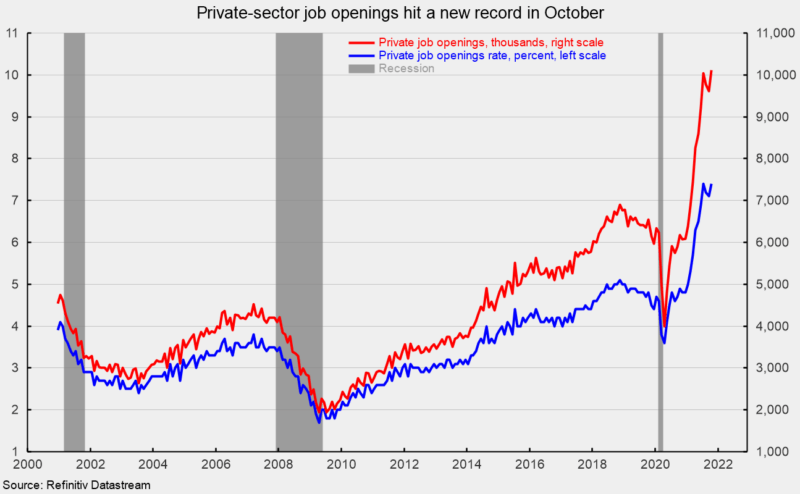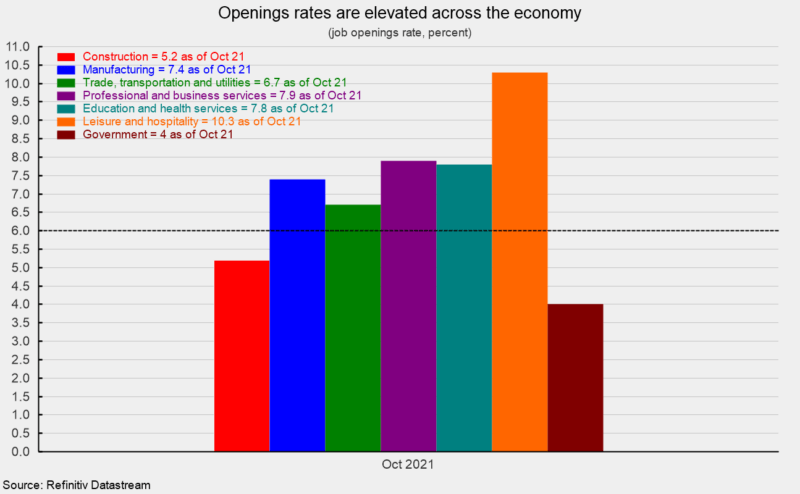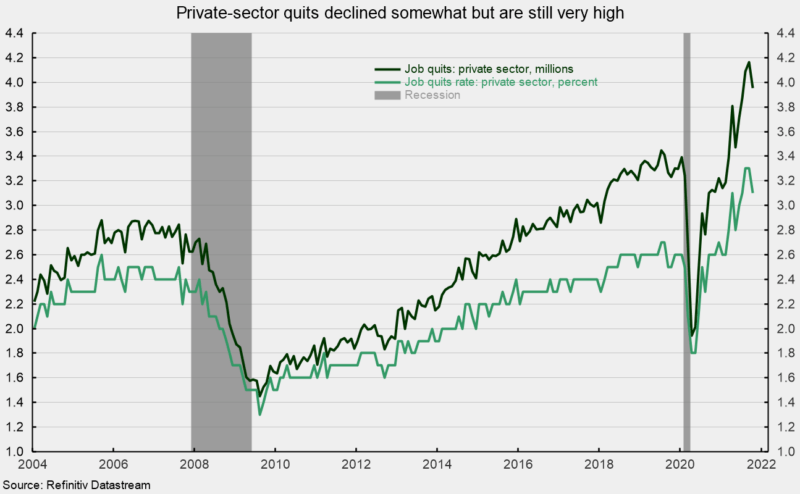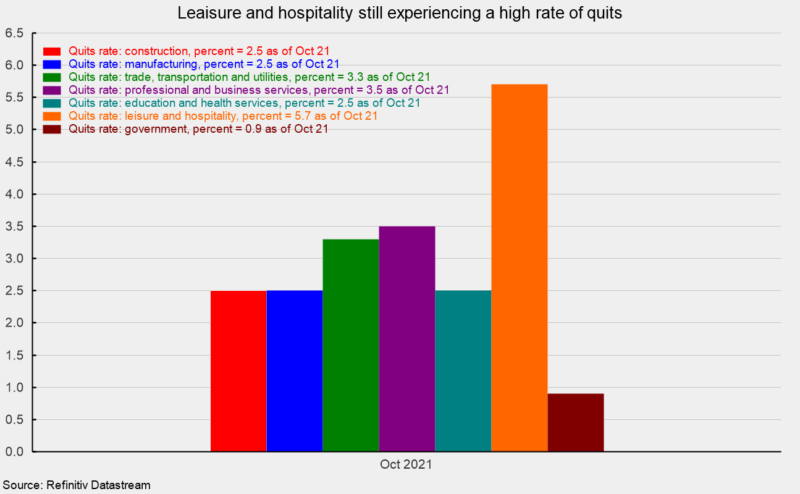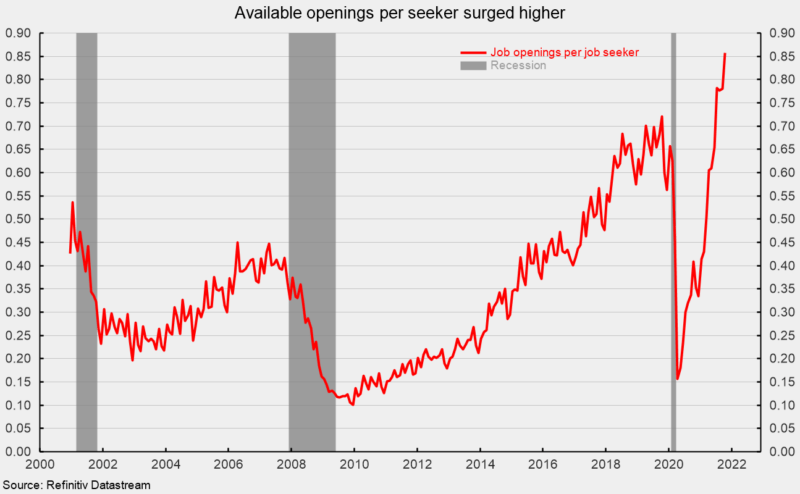Private-Sector Job Openings Rose in October While Quits Eased; Both Remain Very High
The latest Job Openings and Labor Turnover Survey from the Bureau of Labor Statistics shows the total number of job openings in the economy rose to 11.033 million in October, up from 10.602 million in September. The number of open positions in the private sector increased to 10.118 million in October, a new record high, up from 9.614 million in September (see first chart).
The total job openings rate, openings divided by the sum of jobs plus openings, rose to 6.9 percent in October from 6.7 percent in September while the private-sector job-openings rate surged to 7.4 percent, also a new record high, from 7.1 percent.
Four industry categories have more than 1.5 million openings each: education and health care (1.999 million), trade, transportation, and utilities (1.996 million), professional and business services (1.819 million), and leisure and hospitality (1.781 million).
The highest openings rates were in leisure and hospitality (10.3 percent), professional and business services (7.9 percent), education and health care (7.8 percent), manufacturing (7.4 percent), trade, and transportation, and utilities (6.7 percent; see second chart).
The number of private-sector quits was 3.952 million, down from a record high 4.166 million in September. Trade, transportation, and utilities led with 907,000 quits followed by leisure and hospitality with 887,000 quits, and professional and business services with 740,000.
The total quits rate fell to 2.8 percent from 3.0 percent in the prior month while the private-sector quits rate dropped to 3.1 percent versus 3.3 percent; both are close to record highs (see third chart).
The quits rates among the private-sector industry groups is still dominated by leisure and hospitality with a rate of 5.7 percent, well ahead of the number two, professional and business services, with a 3.5 percent rate, and number three, trade transportation, and utilities, with a 3.3 percent quits rate (see fourth chart).
From the worker perspective, labor market conditions remained very favorable in October. The number of openings per job seeker (unemployed plus those not in the labor force but who want a job) rose again, to 0.857 in October from 0.781 in September. Prior to the recession, the high was 0.721 in October 2019 (see fifth chart).
Today’s job openings data suggest a very tight labor market. A significant number of former labor market participants remain on the sidelines (both the size of the labor force and the participation rate remain below pre-pandemic levels), sustaining the tight labor market. The outlook for the economy is for continued growth but difficulty hiring and retaining employees is likely to prolong ongoing materials shortages, production constraints, and logistical and transportation bottlenecks. These issues are sustaining significant upward pressure on prices and represent a risk to future growth. Enticing people back to work could help ease supply problems and reduce upward pressure on prices.

